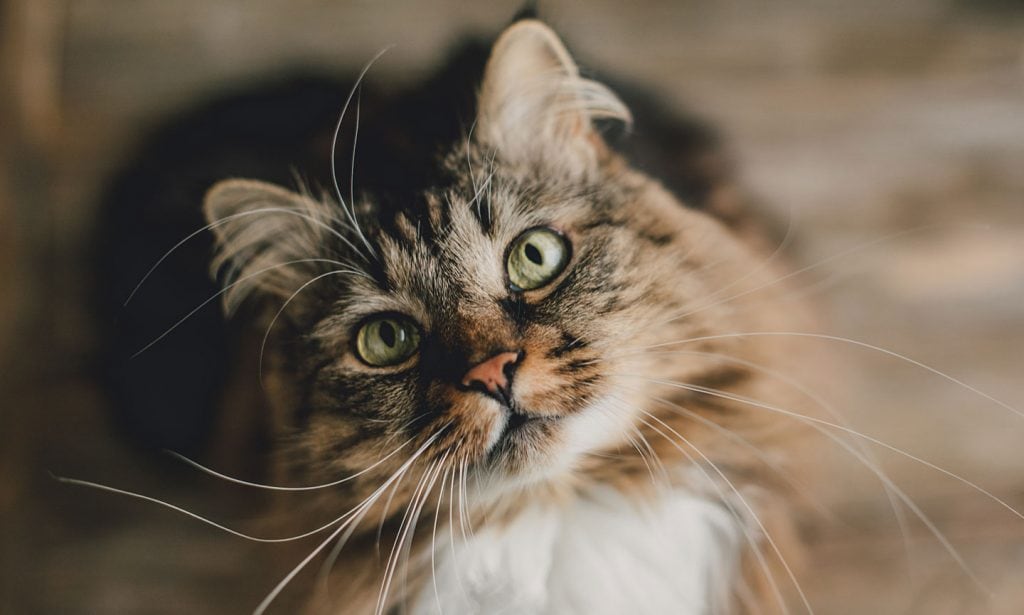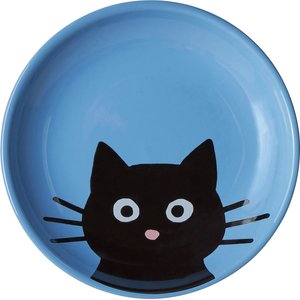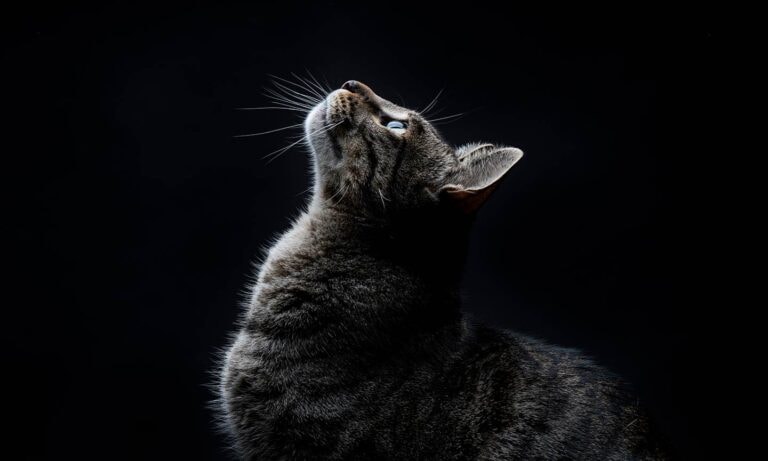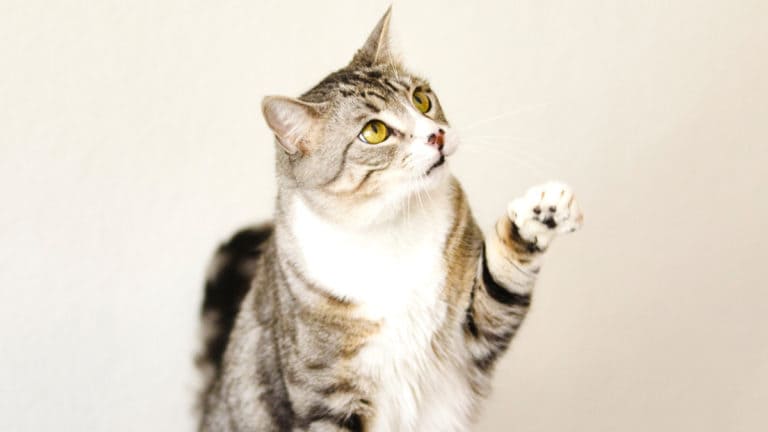Cat whiskers seem like an ordinary part of your cat’s face, just like our own eyebrows or eyelashes. But unlike our human hair, cat whiskers are much more than a bunch of dead cells.
Cat whiskers serve many essential purposes for our feline friends, largely helping them to navigate the world. We spoke to the experts to help get the lowdown on these cute and useful hairs.
What Are Whiskers?
Cat whiskers are stiff hairs called “vibrissa” (singular) or “vibrissae” (plural), just in case it comes up in trivia. They are twice as thick and coarser than coat hair, says Lana Fraley Rich, the “Catsultant” and well-known cat behaviorist.
They are also more sensitive than regular hair. That’s because whiskers are set three times deeper into the skin than cat fur, and they have blood vessels that make them very receptive to movement. “When air moves over the whiskers, they vibrate, which stimulates the nerves,” explains Rich.
How Many Whiskers Does a Cat Have?
Cats have more whiskers than you’d think: typically 24 whiskers on their muzzle, 12 on each side, according to Dr. Katy Nelson, DVM, Chewy’s resident veterinarian.
But that’s not all. Cat whiskers are also hiding on our furry friends’ chins, above their eyes and even on the back of their front legs just above the paws.
Why Do Cats Have Whiskers?
They help cats hunt (and avoid being hunted).
This seemingly innocent, cute facial stubble secretly turns cats into stealth, ferocious hunters.
Picture a cat walking down an alley. “When the air hits the wall or another animal, it bounces back, and then the air is detected by the cat’s very sensitive whiskers,” says Rich. It’s like a sixth sense. Cat whiskers not only help them catch the object they’re after but also alert them to approaching predators by detecting changes in the air.
They help cats “see” in the dark.
Ever wonder how cats seem to know where they’re going, even when it’s pitch black? Cat whiskers act as beacons that guide cats at night.
“Their whiskers are almost as important to them as our eyesight and sense of touch is to us,” helping kitties navigate in the dark by sensing subtle changes in air flow and currents, says Rich. That’s why, unlike us, these creatures are adept at finding their way at night. Cat whiskers keep them from stumbling around, knocking things over, and walking right into the furniture.
They help protect a cat’s eyes.
Remember the whiskers above the eye? These functional kitty “eyelashes” have yet another role as antennas. When your cat’s whiskers brush up against something, or when walking underneath a table or chair, these little feelers “trigger a protective blink, when necessary, to protect them from getting poked in the eyes,” says Rich.
They help cats with spatial awareness.
Because whiskers are more sensitive than regular hairs, they help with spatial awareness, sending signals to the brain when air moves past them or an object brushes up against them, Dr. Nelson explains.
In addition, whisker tips house a special sensory organ called proprioceptors that send signals to the brain about the position of a cat’s body, legs and tail. “This is part of the [reason why] cats tend to land on their feet,” Dr. Nelson adds.
They help communicate emotions.
Similar to how we express emotions through our eyebrows and forehead, cat whiskers can actually be an indicator of your favorite feline’s mood. Rich explains that a calm kitty has whiskers that stick out sideways from the face. Cats who are angry or frightened might have their whiskers flat against the cheeks. If your furball is feeling frisky or is on alert, they might push them forward. This information can prove to be pretty useful to cat parents!
Learn more about your cat’s body language.
Why Are Cat Whiskers So Long?
Whisker length depends on the size of the cat, Dr. Nelson says. So, a big Maine Coon, for example, will have much longer whiskers than a small domestic shorthair. (And along similar lines, some cats will have curly whiskers, like a Devon Rex or a Sphynx.)
Do Long Whiskers Mean Cats Need Special Bowls?
Have you ever noticed that cat food bowls tend to be flat and wide? There’s actually a reason for this. Because cat whiskers are so incredibly sensitive, they can experience whisker stress pretty easily.
If your kitty fishes kibble out of the bowl to eat it, you might want to consider a shallow dish to ease those whisker worries. Show your kitty some whisker love with a dish that will make your cat comfy and happy:
Can You Trim Cat Whiskers?
Cat whiskers are pretty amazing, and as we’ve learned, they have so many jobs to do. This is why experts advise you to never intentionally cut a cat’s whiskers, and when you are grooming, pay close attention to make sure you don’t clip a whisker.
“Without their whiskers,” Rich says, “cats can become very stressed, scared and sometimes disoriented. They can start acting dizzy and/or confused because they aren’t receiving their navigation signals—their radar system is ‘down’ until their whiskers get close to being fully grown back.”
Do Cats Shed Whiskers?
Yes, cats do shed their whiskers, Dr. Nelson says. Cat whiskers fall out on their own every few months and grow back in the same spot, which is called the whisker pad, located on the side of the kitty’s face between the nose and the mouth.
Do Cat Whiskers Grow Back?
Yes, if a cat whisker falls out as part of the normal shedding process (remember to never cut them!), they do grow back. It can take two or three months for cat whiskers to grow back, so make sure you let them grow naturally.
Do Cat Whiskers Change Color as Cats Age?
Yes, cat whiskers do change color as cats age. Even though most cat whiskers are white, those that are black to begin with can turn white as your kitty ages.
Now that you’re whisker-wise, you can appreciate that your cat’s whiskers are not just a thing of beauty and pride for your feline companion. They play a much bigger role than mere facial embellishments, helping out with everything from hunting to navigating every environment, even in the dark, so remember to admire them from afar!
Luann Gould contributed to this article.
Learn more about cats:
Share:












